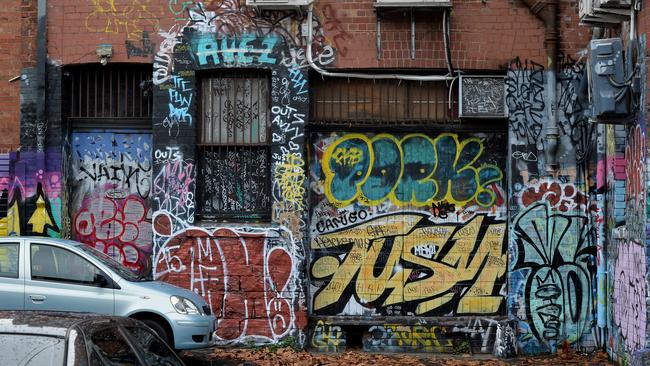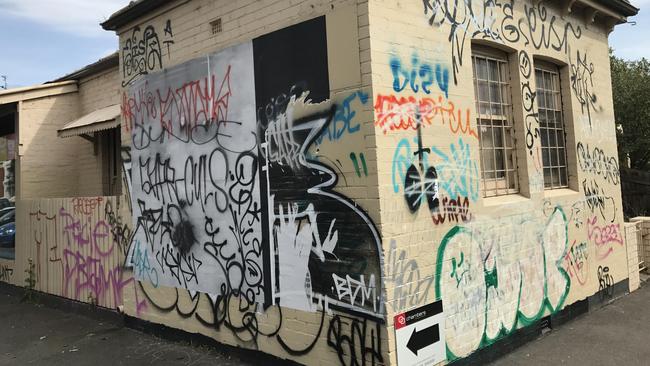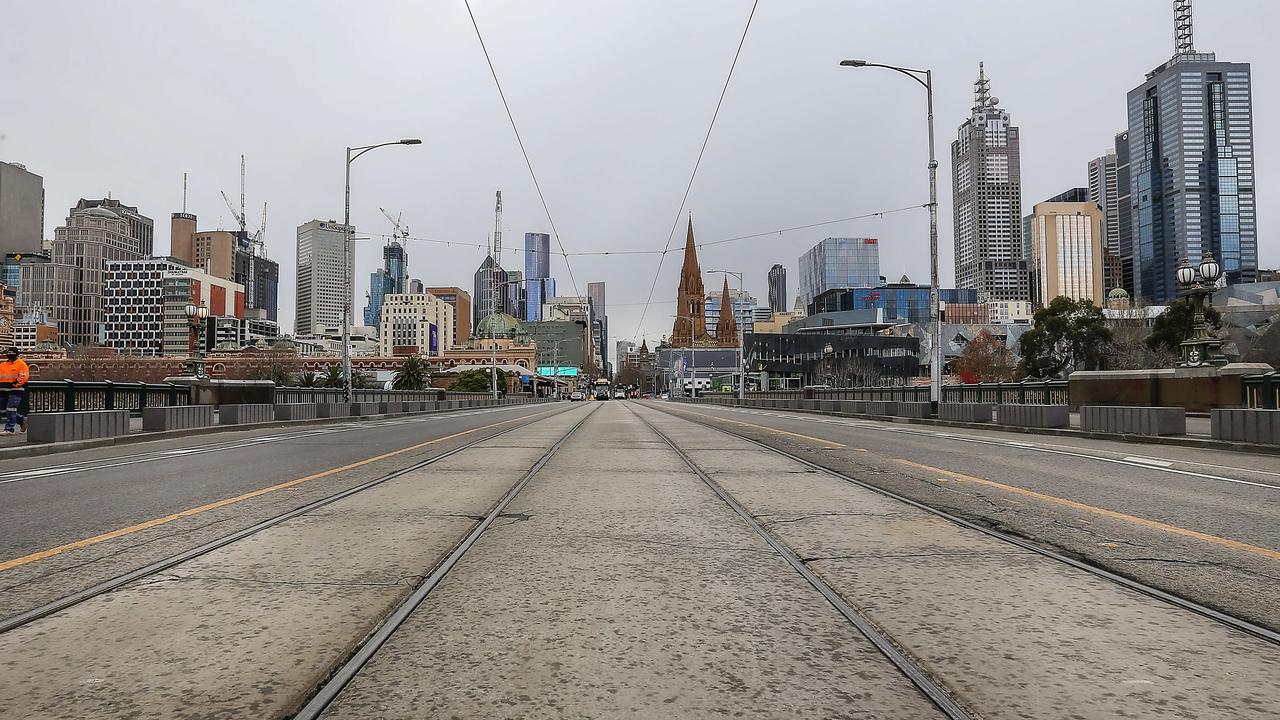Government, councils should not ignore growing graffiti vandalism
ALLOWING the graffiti vandals to get away with it sets a precedent that will have an impact in the future, writes Shaun Carney.

Opinion
Don't miss out on the headlines from Opinion. Followed categories will be added to My News.
BEING wrong can really clarify the mind.
Last week, while I was waiting for a tram at my local stop, I noticed that the old fire station opposite, now converted into apartments, had new and quite massive graffiti tags on its big wooden doors.
Offended by the sight, I cast my eyes elsewhere. Every metal and wooden pole along the road was covered in tags. So, too, were the fences of the homes next to the stop, as well as a second-storey wall on an adjacent townhouse. The tram stop shelters on both sides of the road had names and tags scratched into their glass panels.
On my way to the tram stop, I’d noticed that a big mobile electronic sign advising cyclists about a pathway closure due to drainage works had been almost covered up by two large tags. The sign had been there only for a couple of days. It never stood a chance.
That made me feel dejected and silly. Last year in a column decrying tagging, I’d hailed so-called street art and claimed that it offered a way of converting some taggers into legitimate spray-can artists. I was wrong and it was a dopey argument to make.
Read more: Take the Sunday Herald Sun council watch survey and share your story
I suspect the endorsement of street art, which is an approach taken by a number of municipal councils, especially in the inner suburbs, is making things worse. Once you say it’s okay to paint on someone else’s property, who’s to say what’s art and what isn’t?
Certainly in the parts of Melbourne I travel through, tagging is approaching the pandemic stage. Nothing is sacred. Fences, walls, poles, signs, trees — they all cop it. Houses with side walls that sit flush with footpaths almost invariably have a darker shade of paint up to about 2.5m because their owners have had to paint over graffiti so many times.
And where I live, it’s the owners who have to clean it up. Unless you’re frail or infirm, the council won’t do it for you. It will give you a cleaning kit if you ask for one. Otherwise, you’re on your own.
And if you don’t want to clean it off or cover it up, you don’t have to.
I learned that recently. In my neighbourhood is a corner shop and residence that must be 100 years old.
Since it was damaged in a fire in 2008, it’s been vacant and as a result, it has become a graffiti cesspit. It’s on a prominent corner.
Earlier this year, a member of my household contacted one of our local councillors requesting it be cleaned up. A request came back from the councillor: email me some photos and I’ll send this matter on to council officers. That was duly done.
Three months later, a council officer sent us an email declaring the matter “resolved”. She acknowledged that graffiti on unoccupied buildings was “a significant issue” but the council’s main obligation was to look after its own assets and “high-profile areas, such as municipality gateways and shopping centres”.

The council officer went on: “Unfortunately, tagging and graffiti is such an extensive community problem that property owners need to deal with tagging on private property as part of their general property maintenance responsibilities. Council has tried to contact the property owner to remind them of their responsibilities. Unfortunately, council liaison with the property owner has not been successful in getting the graffiti removed.”
In other words, “resolved” meant “stiff cheddar”. The building is even more disgusting now, which is not good. Graffiti invites more graffiti.
The more quickly tags are removed, the less likely other taggers are going to want to make their own mark on that surface. And taggers on their way to a spot where they know they can spray away to their heart’s content will tag anything that takes their fancy on their way there, so the whole local community ends up suffering.
Is this just a first-world problem? I don’t think so.
My local council — and it’s not the only one — has decided that it’s all too hard, so just let taggers do what they want.
Successive state governments have not been far behind.
Legislation carries a penalty of up to two years’ jail but in reality, the law is hardly ever applied.
By turning a blind eye, we’re encouraging law-breaking and disrespect that is destined to have a wider knock-on effect for decades to come. Taggers might stop tagging one day but why wouldn’t they carry their sly, up-yours, anti-social tagger’s attitude through adulthood and pass it on to their children?
The biggest problem isn’t having to clean up graffiti, it’s that we don’t do enough to deter them in the first place by punishing them, with possible consequences for the rest of their lives in terms of employment, access to credit, government jobs and so on.
Here’s an idea for the state government, under the pump on law and order: get serious on this. Set aside a decent amount of money for a dedicated taskforce to look at what’s been done around the world and commit at the outset to fully criminalising tagging with appropriate punishments and enough police resources to secure genuine, meaningful convictions.
Melbourne might be the most liveable city but it’s increasingly a very ugly city, too.
Shaun Carney is a Herald Sun columnist and adjunct associate professor of politics at Monash University


